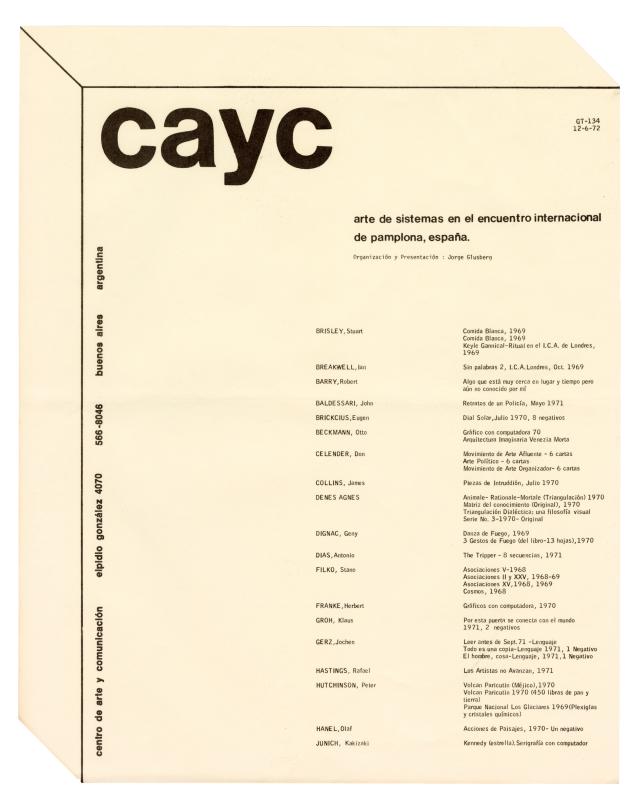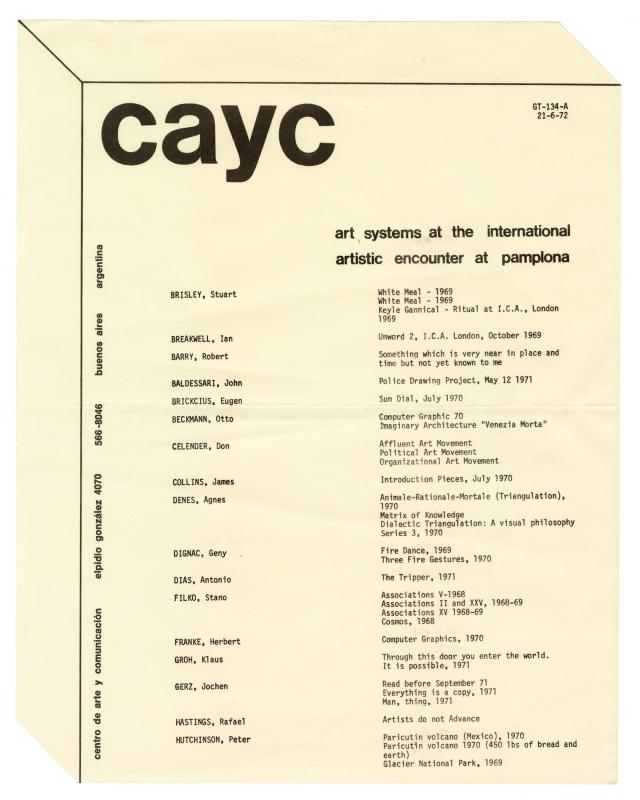Ever since it was founded, the CAYC (Centro de Arte y Comunicación), helmed by the cultural promoter, artist, and businessman Jorge Glusberg, was intended as an interdisciplinary space where an experimental art movement could flourish. The establishment of collaborative networks connecting local and international artists and critics played an important role in this process. In addition to the exhibitions, a program of different activities provided viewers with a greater chance of seeing the latest innovations in art and scientific thought.
In the talk announced in this newsletter, Jorge Glusberg discussed three of the major events that took place in the field of international art in 1972. This was the first year that the Venice Biennale had a video section; there was also a sculpture exhibition that required more space than the dei Giardini zone could provide and was installed in city plazas and in the loggia at the Palazzo Ducale. The number of participating works grew. In the central pavilion, the Italian selection was, for the first time, organized according to a theme, “Opera o comportamento,” which included a work (opera) that appears in the third photograph in the newsletter: Esposizione in tempo reale (1972), by Franco Vaccari (b. 1936), a photo booth with a sign inviting visitors to have their photo taken and hang it on the wall. (S. Portinari, Index Journal, 2022).
Meanwhile, at the garden of the Museum Fridericianum during documenta 5, the photograph in the middle shows the People’s Participation Pavilion (1972), a popular wooden pavilion painted red, coproduced by the Filipino artist David Medalla (1942–2020) and North American artist John Dugger (1948–2023). Inside another exhibit with political content were a variety of elements, such as a live snake, a bubble machine, and a portrait of the Vietnamese national revolutionary leader Hồ Chí Minh (1890–1969). (www.documenta-archiv.de).
The CAYC took part in that year’s edition of the Encuentro Internacional de Arte in Pamplona, where the latest processual poetics were shown on an international stage. The Buenos Aires center was thus ideally positioned together with examples of Latin American conceptualism. (GT-134-134-II; doc. no. 1476331 and , GT-134 A-134A-II; doc. no. 1478012).


